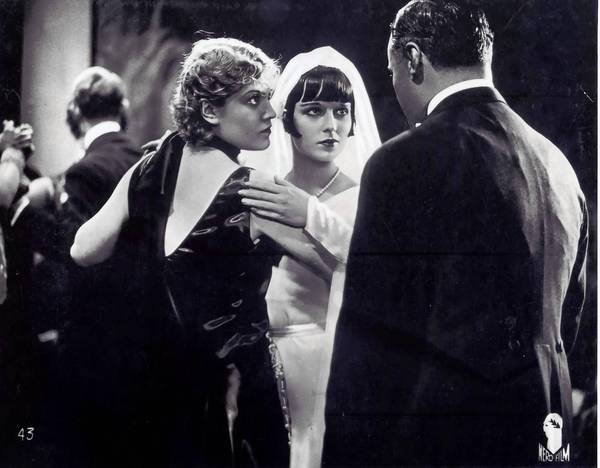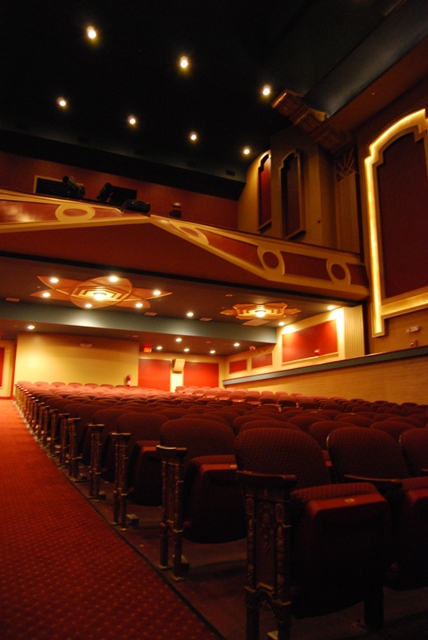 PANDORA’S BOX (1929); Dir: Georg Wilhelm Pabst; Starring Louise Brooks, Francis Lederer; with live organ accompaniment by Ron Carter; Sun. Nov. 25 3:00 p.m.; The Strand Theatre
PANDORA’S BOX (1929); Dir: Georg Wilhelm Pabst; Starring Louise Brooks, Francis Lederer; with live organ accompaniment by Ron Carter; Sun. Nov. 25 3:00 p.m.; The Strand Theatre
By Andrew Kemp
Contributing Writer
Ever since The Earl Smith Strand Theatre found new life on the Square in Marietta, the theater’s event schedule has cast a wide net. In between the usual live events and mainstream film titles, The Strand quietly stands as one of the last venues in Atlanta to regularly seek out and book classic silent films, a callback to its roots as an old movie house. (The Strand’s first ever show was the 1935 Fred Astaire-Ginger Rogers vehicle, TOP HAT.) Except that by the time The Strand opened, the talkies had already taken hold, so the decision to run silent pictures in an increasingly-noisy age of media strikes me as more than nostalgia. It’s incredibly brave.
And so, fittingly, The Strand has found a brave picture to screen. There are few silents more daring than PANDORA’S BOX (1929), playing Sunday afternoon Nov. 25 at 3 p.m.—even braver!—accompanied by a full organ score. PANDORA’S BOX doesn’t fit the mold of the typical silent melodrama. Louise Brooks stars as Lulu, a young woman whose ambition is eclipsed only by her voracious sexual appetite. She uses sex as a weapon to get what she wants, or who she wants, and the film largely deals with an escalating series of consequences, from murder, to imprisonment, and finally… well, I won’t spoil it, but Lulu’s story crosses with a famous historical figure, and her final reward is a spot in historical infamy.
PANDORA’S BOX is directed by the great Austrian director G.W. Pabst, whose list of leading ladies includes such names as Greta Garbo and Leni Riefenstahl, but he cast no lady as magnetic or iconic as Brooks, whose distinctive flapper style and bobbed haircut are more famous today than her name. Brooks was an American actress who rubbed elbows with names like William Randolph Hearst, but who grew dissatisfied with the American system and fled to Europe, where audiences came out in droves to see her magnetism and sexuality portrayed on screen. Lulu is a part born for Brooks and, although the film met with a fair amount of pushback from concerned censors, eventually made Brooks an international star. Today, her name is inseparable from the film’s title.
I mentioned censors, but it’s important to note that PANDORA’S BOX was a pre-code picture. In fact, the film came to America in December 1929, only three months before the adoption of the Hays Code that put a lid on the titillation and sexual experimentation of the earliest studio pictures. (Even in the ’20s, people knew the truth about film audiences—sex sells tickets.) PANDORA’S BOX contains a litany of elements that would soon disappear from American cinemas, such as frank sexuality and a disrespect for marriage. Just a decade later, Lulu’s actions would have classified her as a femme fatale, and she’d certainly snare a young hero or two to their doom. Here, the reality is a bit more complicated, and although it’s true that Lulu faces retribution for her loose morals, it’s hard to ignore the allure of her behavior, which is what the Hays Code was trying to snuff out in the first place.

Alice Roberts as Countess Anna Geschwitz and Louise Brooks (center) as Lulu in PANDORA'S BOX (1929), directed by G.W. Pabst. Credit: UCLA Film and Television Archive
PANDORA’S BOX is also a landmark film in queer cinema, as it does contain (if briefly) one of the first ever screen representations of a lesbian. Played by Alice Roberts, the Countess Geschwitz enters the film dressed in men’s clothes—a tuxedo—and fawns over Lulu, suggesting that the two have a sexual past. Within a year, even such a minor reference to homosexuality would be strictly outlawed on American screens.
PANDORA’S BOX is widely available online, but as with all films, especially from this era, it belongs on the screen (and trust me when I say that a live organ makes all the difference in the world). The film arrived at the end of the golden period of silent films, the end of the pre-code movies, and even puts a symbolic coda on the decade of decadence that was the 1920s. It stands proud as a threshold between two very different eras of cinema. But its sexuality, its spectacle and the compelling nature of its tragic antihero also remind us of another, sometimes-forgotten fact: what excites and thrills us today is the same as it ever was. We didn’t change—the pictures did.
For more about The Strand’s efforts to screen silents as they should be with live organ scores, read our Kool Kat interview with organist Ron Carter, who will be accompanying PANDORA’s BOX here.







